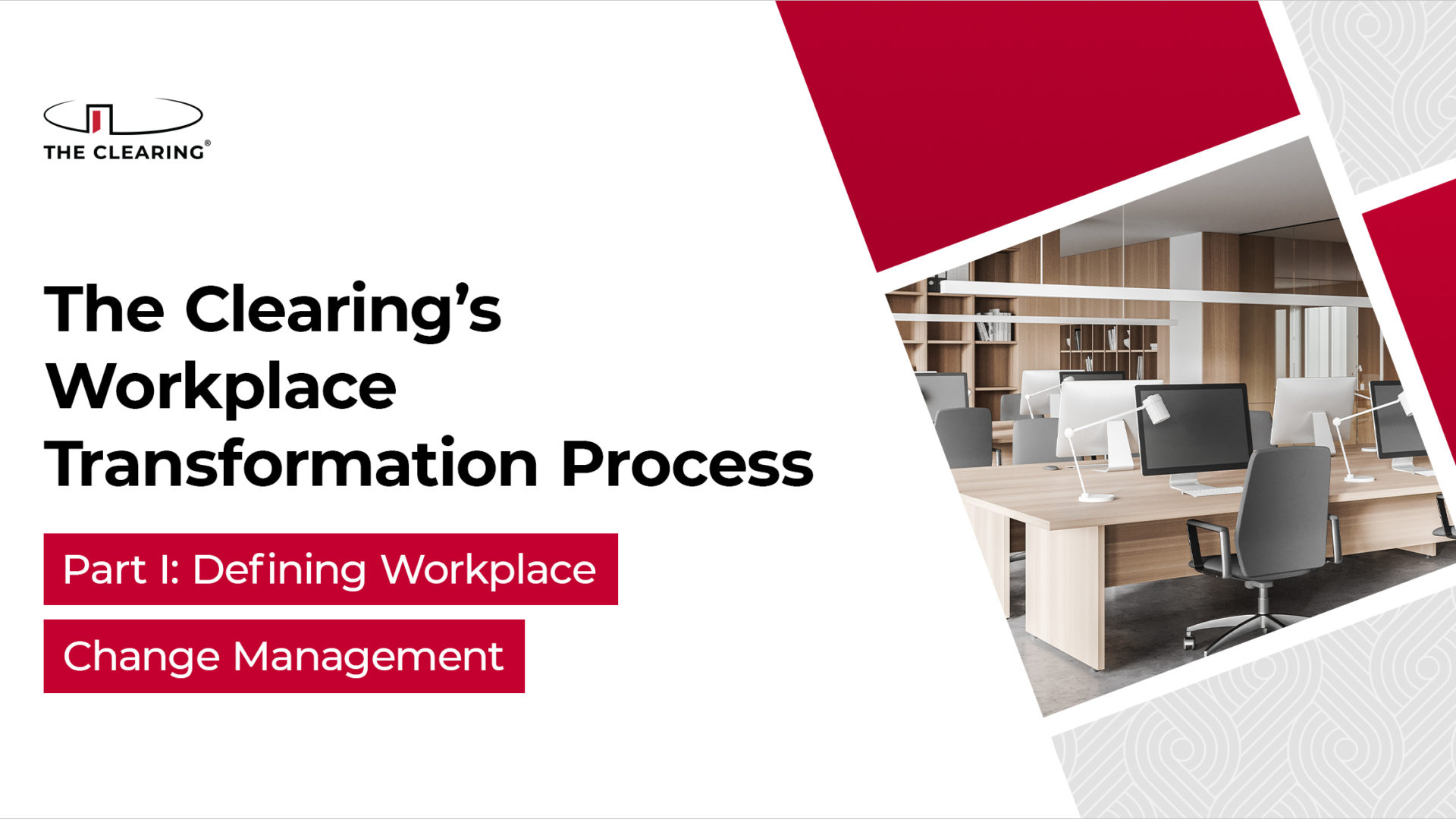No two workplaces are the same, with one exception: people are at the center of every single one. In fact, 82% of employees agree it is important their organization see them as a person, not just an employee. As such, no two workplace transformation strategies are identical. In the first of a series on our unique approach to workplace transformation, Nick Srebrow defines The Clearing’s people-first approach to workplace change management.
Why Workplace Strategy and Change Management Are Critical
There is workplace strategy and then there is workplace change management. While they sound like they could be used interchangeably, they are very different. Both approaches are critical for a successful workplace transformation; however, it is important to understand what each discipline brings to the table. Here’s a simple example to illustrate the difference.
Imagine your organization is transforming its workspace. A workplace strategist will be concerned about what spaces are available and where groups/people sit in the revamped space. A workplace change management expert, however, will be concerned about how people feel in the new space and the experience of getting into that space. Because people are the linchpin of organizational success, ensuring they feel good about the transformation is critical to an effective workplace change plan. The focus on the end-user experience is the nuance that sets The Clearing apart when it comes to guiding organizations through workplace transformation. Research bears this people-first approach out.
According to Gartner, human-centric work environments are:

Workplace transformation is typically a large investment. This includes the cost of the physical transformation – new space, new fixtures, new technology – and human capital expenditures – training, moving, workspace, and more. Organizations may focus resources on building a new space, renovating an existing space, and outfitting that space with the latest and greatest in fixtures, furniture, and technology. However, maximizing the return on that investment comes down to ensuring the people who will use it are on board with the change, are comfortable in the new environment, and feel heard during the transformation process.
That’s why we combine our people-first approach to consulting with workplace strategy expertise AND change management know-how to go beyond cookie-cutter solutions and meet all three of those objectives. This allows our team of workplace professionals to create the right transformation plan for each organization and effectively manage the disruption that comes with change, leading to a better outcome for all.
Keep a lookout for our next post in our workplace transformation series, where we will cover the specific conditions required for workplace change success.






 The Clearing’s Employee Experience
Improvement model, adapted from Itam
& Ghosh, 2020, focuses on three objectives:
The Clearing’s Employee Experience
Improvement model, adapted from Itam
& Ghosh, 2020, focuses on three objectives: 














